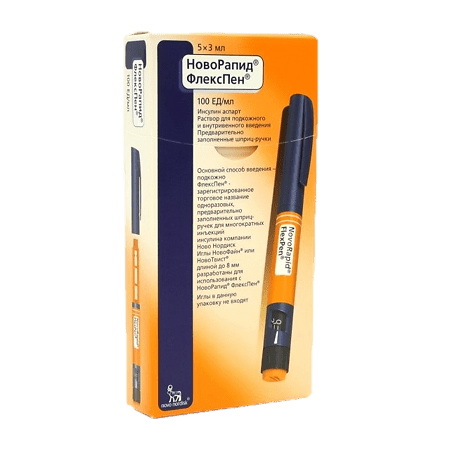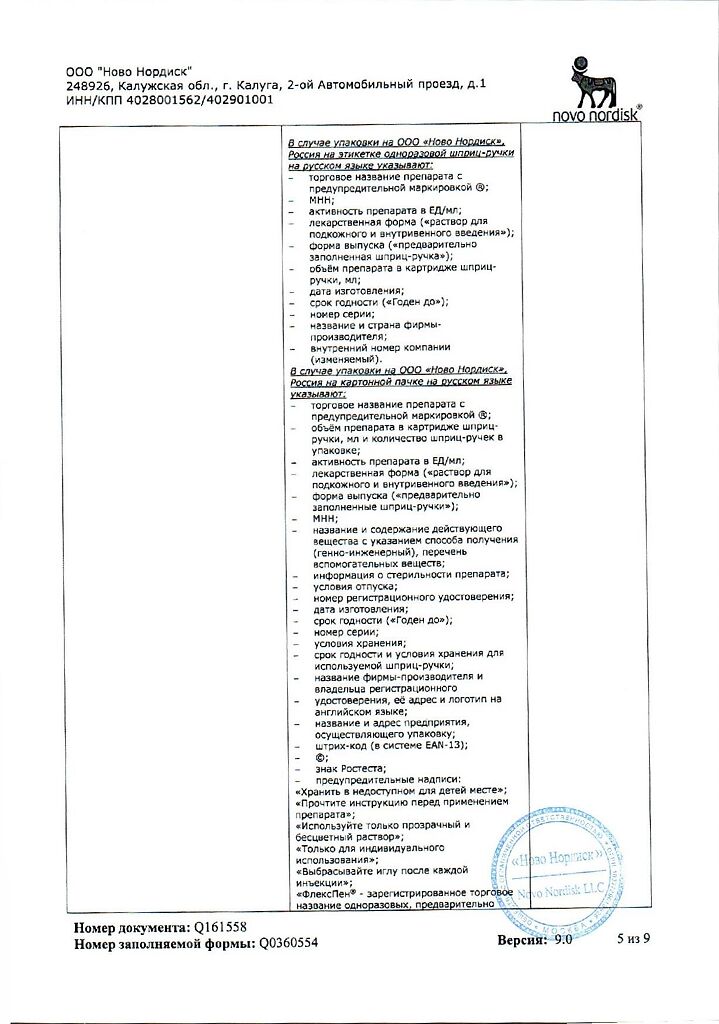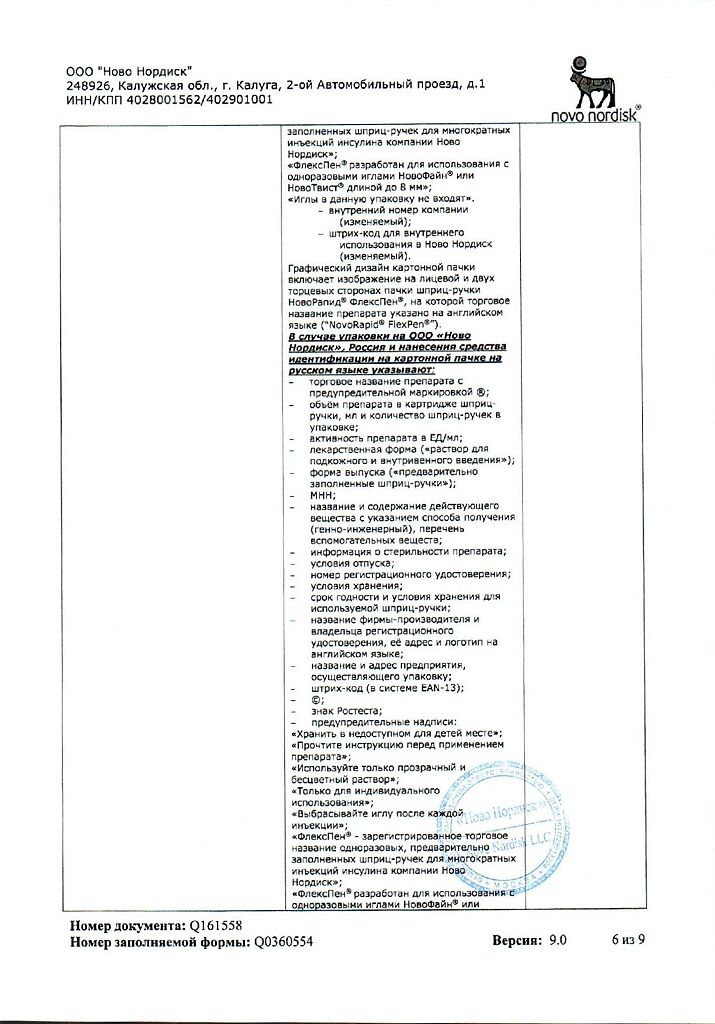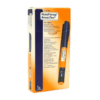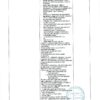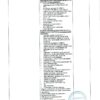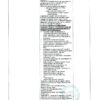No products in the cart.
NovoRapid FlexPen, 100 U/ml 3 ml cartridges in FlexPen syringe pens 5 pcs
€55.68 €46.40
Description
NovoRapid FlexPen is hypoglycemic.
Pharmacodynamics
Insulin aspart is an analog of human insulin short-acting, produced by recombinant DNA biotechnology using Saccharomyces cerevisiae strain, in which the amino acid proline in position B28 is replaced with asparagic acid.
It interacts with specific receptor on outer cytoplasmic cell membrane and forms insulin-receptor complex, stimulating intracellular processes, including synthesis of several key enzymes (including hexokinase, pyruvate kinase, glycogen synthetase). The decrease of glucose content in blood is caused by the increase of its intracellular transport, increased assimilation by tissues, stimulation of lipogenesis and glycogenogenesis and decrease of the rate of glucose production by liver.
The substitution of the amino acid proline at position B28 for asparagic acid in insulin aspart reduces the tendency of molecules to form hexamers, which is observed in regular insulin solution. Aspart insulin is therefore absorbed much faster from the subcutaneous fatty tissue and takes effect much faster than soluble human insulin. Aspart insulin reduces blood glucose levels more strongly in the first 4 hours after a meal than soluble human insulin.
The duration of action of aspart insulin after b/c is shorter than that of soluble human insulin.
After infusion, the action of the drug starts within 10-20 minutes after injection. Maximum effect is observed 1-3 hours after injection. The duration of action of the drug is 3-5 hours.
Clinical studies with patients with type 1 diabetes have demonstrated decreased risk of nocturnal hypoglycemia with aspart insulin compared to soluble human insulin. The risk of daytime hypoglycemia was not significantly increased.
Aspart insulin is equipotential to soluble human insulin based on molarity values.
Adults. Clinical studies involving patients with type 1 diabetes demonstrate lower postprandial blood glucose concentrations with insulin aspart compared to soluble human insulin.
Elderly. A randomized, double-blind, cross-over study of the pharmacokinetics and pharmacodynamics (PK/PD) of aspart insulin and soluble human insulin was performed in elderly patients with type 2 diabetes (19 patients aged 65-83 years, mean age 70 years). The relative differences in pharmacodynamic properties between aspart insulin and soluble human insulin in elderly patients were similar to those in healthy volunteers and in younger diabetic patients.
Children and adolescents. Aspart insulin use in children showed similar long-term glycemic control results when compared to soluble human insulin.
A clinical study using soluble human insulin before meals and insulin aspart after meals was performed in young children (26 patients aged 2 to 6 years); and a single-dose pharmacokinetic/pharmacodynamic (PK/PD) study was performed in children (6-12 years) and adolescents (13-17 years). The pharmacodynamic profile of insulin aspart in children was similar to that of adult patients.
Pregnancy. Clinical studies comparing safety and efficacy of insulin aspart and human insulin in the treatment of pregnant women with type 1 diabetes (322 pregnant women studied, of whom 157 received insulin aspart and 165 received human insulin) showed no adverse effects of insulin aspart on pregnancy or fetal/newborn health.
An additional clinical trial of 27 women with gestational diabetes receiving aspart insulin and human insulin (14 women received aspart insulin and 13 received human insulin) showed comparable safety profiles along with a significant improvement in postprandial glucose control with aspart insulin treatment.
Preclinical safety data.
Preclinical studies have not identified any risk to humans based on data from generally accepted studies of pharmacological safety, repeat use toxicity, genotoxicity and reproductive toxicity.
In in vitro tests, including binding to insulin and insulin-like growth factor-1 receptors and effects on cell growth, the behavior of aspart insulin is very similar to that of human insulin. Studies have also shown that the dissociation of insulin aspart from the insulin receptor is equivalent to that of human insulin.
Pharmacokinetics
The Tmax in plasma is, on average, 2-fold less after administration of Aspart insulin than after administration of soluble human insulin. Plasma cmax averages (492±256) pmol/L and is reached 40 min after a 0.15 IU/kg dose of p/k in patients with type 1 diabetes. Insulin concentration returns to baseline 4-6 h after drug administration. Absorption rate is slightly lower in type 2 diabetic patients, resulting in a lower Cmax – (352±240) pmol/L – and a later Tmax (60 min). Intraindividual variability in Tmax is significantly lower with aspart insulin compared with soluble human insulin, whereas the indicated variability in Cmax is greater for aspart insulin.
Pharmacokinetics in children (6-12 years) and adolescents (13-17 years) with type 1 diabetes.Absorption of insulin aspart is rapid in both age groups with Tmax similar to that of adults. However, there are differences in Cmax in the two age groups, which emphasizes the importance of individual dosing of the drug.
Elderly patients. The relative differences in pharmacokinetics between insulin aspart and soluble human insulin in elderly patients (65-83 years, mean age 70 years) with type 2 diabetes were similar to those in healthy volunteers and in younger diabetic patients. In elderly patients, a decreased absorption rate was observed, resulting in a slower Tmax of 82 (variability 60-120) min, whereas Cmax was similar to that observed in younger patients with type 2 diabetes and slightly less than in patients with type 1 diabetes.
Liver function insufficiency. A pharmacokinetic study was performed on a single dose of Aspart insulin in 24 patients whose liver function ranged from normal to severe impairment. In subjects with impaired liver function, the absorption rate of insulin aspart was reduced and more erratic, resulting in a delayed Tmax from approximately 50 min in subjects with normal liver function to approximately 85 min in subjects with moderate to severe liver function impairment. AUC, plasma Cmax, and total clearance (CL/F) were similar in subjects with impaired and normal liver function.
Inadequate renal function. A study was performed on the pharmacokinetics of insulin aspart in 18 patients whose renal function ranged from normal to severe impairment. There was no apparent effect of creatinine clearance value on the AUC, Cmax,Tmax of insulin aspart. Data were limited to those with moderate to severe renal impairment. Individuals with renal impairment requiring dialysis were not included in the study.
Indications
Indications
Diabetes mellitus in adults, adolescents and children over 2 years of age.
Pharmacological effect
Pharmacological effect
NovoRapid FlexPen – hypoglycemic.
Pharmacodynamics
Insulin aspart is an analogue of human short-acting insulin, produced by recombinant DNA biotechnology using a strain of Saccharomyces cerevisiae, in which the amino acid proline at position B28 is replaced by aspartic acid.
It interacts with a specific receptor on the outer cytoplasmic membrane of cells and forms an insulin receptor complex that stimulates intracellular processes, including the synthesis of a number of key enzymes (including hexokinase, pyruvate kinase, glycogen synthetase). The decrease in blood glucose levels is due to an increase in its intracellular transport, increased absorption by tissues, stimulation of lipogenesis, glycogenogenesis, and a decrease in the rate of glucose production by the liver.
Substitution of the amino acid proline at position B28 with aspartic acid in insulin aspart reduces the tendency of molecules to form hexamers, which is observed in a solution of regular insulin. In this regard, insulin aspart is absorbed much more quickly from subcutaneous fat and begins to act much faster than soluble human insulin. Insulin aspart lowers blood glucose levels more strongly in the first 4 hours after a meal than soluble human insulin.
The duration of action of insulin aspart after subcutaneous administration is shorter than that of soluble human insulin.
After subcutaneous administration, the effect of the drug begins within 10–20 minutes after administration. The maximum effect is observed 1–3 hours after injection. The duration of action of the drug is 3–5 hours.
Clinical studies in patients with type 1 diabetes have demonstrated a reduced risk of nocturnal hypoglycemia with insulin aspart compared with soluble human insulin. The risk of daytime hypoglycemia was not significantly increased.
Insulin aspart is equipotential to soluble human insulin based on molarity.
Adults. Clinical studies in patients with type 1 diabetes mellitus demonstrate lower postprandial blood glucose concentrations with insulin aspart compared with soluble human insulin.
Elderly. A randomized, double-blind, crossover study of the pharmacokinetics and pharmacodynamics (PK/PD) of insulin aspart and soluble human insulin was conducted in elderly patients with type 2 diabetes mellitus (19 patients aged 65–83 years, mean age 70 years). The relative differences in pharmacodynamic properties between insulin aspart and soluble human insulin in elderly patients were similar to those in healthy volunteers and in younger diabetic patients.
Children and teenagers. The use of insulin aspart in children showed similar results of long-term glycemic control when compared with soluble human insulin.
A clinical study using soluble human insulin before meals and insulin aspart after meals was conducted in young children (26 patients aged 2 to 6 years); and a single-dose pharmacokinetic/pharmacodynamic (PK/PD) study was conducted in children (6–12 years) and adolescents (13–17 years). The pharmacodynamic profile of insulin aspart in children was similar to that in adult patients.
Pregnancy. Clinical studies of the comparative safety and effectiveness of insulin aspart and human insulin in the treatment of pregnant women with type 1 diabetes mellitus (322 pregnant women examined, of whom 157 received insulin aspart, 165 received human insulin) did not reveal any negative effects of insulin aspart on the course of pregnancy or the health of the fetus/newborn.
Additional clinical studies of 27 women with gestational diabetes receiving insulin aspart and human insulin (insulin aspart in 14 women, human insulin in 13) show comparable safety profiles along with significant improvements in postprandial glucose control with insulin aspart.
Preclinical safety data.
Preclinical studies have not demonstrated any hazard to humans based on generally accepted pharmacological safety, repeated use toxicity, genotoxicity and reproductive toxicity studies.
In in vitro tests, including binding to insulin and insulin-like growth factor-1 receptors, as well as effects on cell growth, the behavior of insulin aspart is very similar to that of human insulin. The study results also showed that the dissociation of insulin aspart binding to the insulin receptor is equivalent to that of human insulin.
Pharmacokinetics
After subcutaneous administration of insulin aspart, Tmax in blood plasma is on average 2 times less than after administration of soluble human insulin. Cmax in blood plasma averages (492±256) pmol/l and is achieved 40 minutes after subcutaneous administration of a dose of 0.15 U/kg to patients with type 1 diabetes mellitus. Insulin concentration returns to the original level 4–6 hours after administration of the drug. The rate of absorption is slightly lower in patients with type 2 diabetes, resulting in a lower Cmax – (352 ± 240) pmol/l – and a later Tmax (60 min). Intra-individual variability in Tmax is significantly lower with insulin aspart compared to soluble human insulin, whereas reported variability in Cmax is greater for insulin aspart.
Pharmacokinetics in children (6–12 years) and adolescents (13–17 years) with type 1 diabetes mellitus. Absorption of insulin aspart occurs rapidly in both age groups with a Tmax similar to that in adults. However, there are differences in Cmax in the two age groups, which emphasizes the importance of individual dosage of the drug.
Elderly patients. The relative differences in pharmacokinetics between insulin aspart and soluble human insulin in elderly patients (65–83 years, mean age 70 years) with type 2 diabetes mellitus were similar to those in healthy volunteers and in younger diabetic patients. In elderly patients, a decrease in the rate of absorption was observed, which led to a slower Tmax of 82 (variability 60–120) min, while Cmax was similar to that observed in younger patients with type 2 diabetes mellitus and slightly less than in patients with type 1 diabetes mellitus.
Insufficiency of liver function. A single-dose pharmacokinetic study of insulin aspart was conducted in 24 patients with normal to severely impaired liver function. In subjects with hepatic impairment, the rate of absorption of insulin aspart was reduced and more variable, resulting in a slowing of Tmax from approximately 50 minutes in subjects with normal hepatic function to approximately 85 minutes in subjects with moderate to severe hepatic impairment. AUC, plasma Cmax, and total clearance (CL/F) were similar in subjects with reduced and normal liver function.
Insufficiency of kidney function. A study was conducted on the pharmacokinetics of insulin aspart in 18 patients whose renal function ranged from normal to severely impaired. There was no clear effect of creatinine clearance on AUC, Cmax, Tmax of insulin aspart. Data were limited to those with moderate to severe renal impairment. Persons with renal failure requiring dialysis were not included in the study.
Special instructions
Special instructions
Before traveling for long periods of time due to jet lag, the patient should consult with their physician, as jet lag means that the patient must eat and take insulin at different times.
Hyperglycemia. Insufficient dosage of the drug or discontinuation of treatment, especially in type 1 diabetes mellitus, can lead to the development of hyperglycemia and diabetic ketoacidosis. Typically, symptoms of hyperglycemia appear gradually over several hours or days. Symptoms of hyperglycemia include nausea, vomiting, drowsiness, redness and dryness of the skin, dry mouth, increased urine output, thirst and loss of appetite, as well as the smell of acetone in the exhaled air. Without appropriate treatment, hyperglycemia can lead to death.
Hypoglycemia. Skipping meals, unplanned increased physical activity, or an insulin dose that is too high for the patient’s needs can lead to hypoglycemia. After compensation of carbohydrate metabolism, for example, with intensified insulin therapy, patients may experience changes in their typical symptoms that are precursors of hypoglycemia, of which patients should be informed. The usual warning symptoms may disappear with prolonged diabetes mellitus.
A consequence of the pharmacodynamic properties of short-acting insulin analogues is that the development of hypoglycemia with their use may begin earlier than with the use of soluble human insulin.
Since NovoRapid® FlexPen® should be used in direct connection with food intake, the high rate of onset of the drug’s effect should be taken into account when treating patients with concomitant diseases or taking drugs that slow down the absorption of food. Concomitant diseases, especially infectious ones and those accompanied by fever, usually increase the body’s need for insulin. Dose adjustment of the drug may also be required if the patient has concomitant diseases of the kidneys, liver, dysfunction of the adrenal glands, pituitary gland or thyroid gland.
When transferring a patient to other types of insulin, early symptoms that are precursors of hypoglycemia may become less pronounced compared to those when using the previous type of insulin.
Transferring the patient from other insulin preparations. Transferring a patient to a new type of insulin or an insulin preparation from another manufacturer must be carried out under strict medical supervision. If the concentration, type, manufacturer and type (human insulin, animal insulin, human insulin analogue) of insulin preparations and/or manufacturing method change, it may be necessary to change the dose or increase the frequency of injections compared to previously used insulin preparations. If dose adjustment is necessary, it can be done at the first administration of the drug or during the first weeks or months of treatment.
Reactions at the injection site. As with treatment with other insulin drugs, reactions may develop at the injection site, manifested by pain, redness, urticaria, inflammation, hematoma, swelling and itching. Regularly changing injection sites in the same anatomical area may reduce symptoms or prevent reactions. In very rare cases, it may be necessary to discontinue NovoRapid® FlexPen®.
Concomitant use of drugs of the thiazolidinedione group and insulin drugs. Cases of the development of chronic heart failure have been reported when treating patients with thiazolidinediones in combination with insulin drugs, especially if such patients have risk factors for the development of chronic heart failure. This fact should be taken into account when prescribing combination therapy with thiazolidinediones and insulin drugs to patients. When prescribing such combination therapy, it is necessary to conduct medical examinations of patients to identify signs and symptoms of chronic heart failure, weight gain and the presence of edema. If patients’ symptoms of heart failure worsen, treatment with thiazolidinediones should be discontinued.
Impact on the ability to drive vehicles and operate machinery. Patients’ ability to concentrate and react quickly may be impaired during hypoglycemia, which can be dangerous in situations where these abilities are especially necessary (for example, when driving a vehicle or working with machinery). Patients should be advised to take measures to prevent the development of hypoglycemia when driving vehicles and operating machinery. This is especially important for patients with no or decreased severity of symptoms that are warning signs of developing hypoglycemia or who suffer from frequent episodes of hypoglycemia.
Active ingredient
Active ingredient
Insulin aspart
Composition
Composition
Active ingredient:
insulin aspart 100 units (3.5 mg);
Excipients:
glycerol – 16 mg;
phenol – 1.5 mg;
metacresol – 1.72 mg;
zinc chloride – 19.6 mcg;
sodium chloride – 0.58 mg;
sodium hydrogen phosphate dihydrate – 1.25 mg;
sodium hydroxide 2M – about 2.2 mg;
hydrochloric acid 2M – about 1.7 mg;
water for injection – up to 1 ml
Contraindications
Contraindications
Increased individual sensitivity to insulin aspart or any of the components of the drug.
It is not recommended to use NovoRapid® FlexPen® in children under 2 years of age, because Clinical studies have not been conducted in children under 2 years of age.
Interaction
Interaction
There are a number of drugs that affect the need for insulin. The hypoglycemic effect of insulin is enhanced by oral hypoglycemic drugs, MAO inhibitors, ACE inhibitors, carbonic anhydrase inhibitors, non-selective beta-blockers, bromocriptine, sulfonamides, anabolic steroids, tetracyclines, clofibrate, ketoconazole, mebendazole, pyridoxine, theophylline, cyclophosphamide, fenfluramine, drugs lithium, salicylates.
The hypoglycemic effect of insulin is weakened by oral contraceptives, corticosteroids, thyroid hormones, thiazide diuretics, heparin, tricyclic antidepressants, sympathomimetics, somatropin, danazol, clonidine, CCB, diazoxide, morphine, phenytoin, nicotine.
Beta blockers may mask the symptoms of hypoglycemia.
Octreotide/lanreotide can either increase or decrease insulin requirements.
Alcohol can either increase or decrease the hypoglycemic effect of insulin.
Incompatibility. Some drugs, for example those containing thiol or sulfite groups, when added to NovoRapid® FlexPen®, can cause the destruction of insulin aspart. The drug NovoRapid® FlexPen® should not be mixed with other drugs.
Overdose
Overdose
Symptoms. A specific dose required for insulin overdose has not been established, but hypoglycemia can develop gradually if doses that are too high in relation to the patient’s needs are administered.
Treatment. The patient can eliminate mild hypoglycemia himself by ingesting glucose or sugar-containing foods. Therefore, patients with diabetes are advised to carry sugar-containing products with them at all times.
In case of severe hypoglycemia, when the patient is unconscious, 0.5 mg to 1 mg of glucagon should be administered IM or SC (can be administered by a trained person) or IV glucose (dextrose) solution (can only be administered by a medical professional).
It is also necessary to administer dextrose intravenously if the patient does not regain consciousness 10–15 minutes after the administration of glucagon. After regaining consciousness, the patient is advised to take a carbohydrate-rich meal to prevent relapse of hypoglycemia.
Storage conditions
Storage conditions
In a place protected from light, at a temperature of 2–8 °C (do not freeze)
Shelf life
Shelf life
30 months
Manufacturer
Manufacturer
Novo Nordisk A/S, Denmark
Additional information
| Shelf life | 30 months |
|---|---|
| Conditions of storage | In the dark place at 2-8 °C (do not freeze) |
| Manufacturer | Novo Nordisk A/S, Denmark |
| Medication form | solution |
| Brand | Novo Nordisk A/S |
Related products
Buy NovoRapid FlexPen, 100 U/ml 3 ml cartridges in FlexPen syringe pens 5 pcs with delivery to USA, UK, Europe and over 120 other countries.

